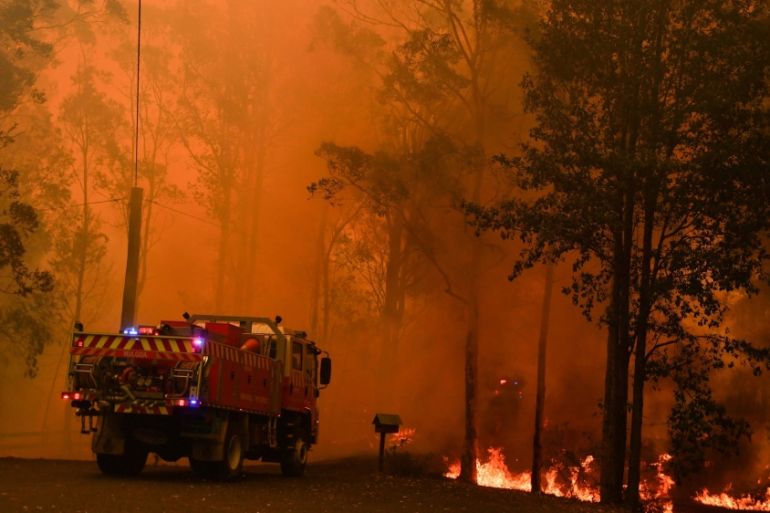Past Compliance: Enhancing Building Security with a Thorough BAL Report Analysis
Past Compliance: Enhancing Building Security with a Thorough BAL Report Analysis
Blog Article
Exactly How BAL Report Impacts Shrub Fire Defense Actions
In the world of bush fire defense, the Building Strike Level (BAL) report stands as an important device that substantially affects the safety and security and strength of properties in fire-prone locations - BAL Report. The impact of a BAL evaluation extends far past mere documentation; it works as the cornerstone for identifying the suitable construction criteria and fire protection actions essential to minimize the risks postured by bushfires. As neighborhoods come to grips with increasingly serious fire periods, understanding just how the BAL report forms these safety steps becomes critical for policymakers, home builders, and house owners alike
Comprehending the Bushfire Attack Degree

Relevance of BAL Report Assessment

Furthermore, the BAL report evaluation acts as a foundational action in abiding with legal obligations and requirements connected to bushfire protection. Regional councils and authorities frequently mandate the entry of a BAL record as part of the planning and structure approval process to ensure that buildings are sufficiently safeguarded against bushfire risks. Falling short to conduct a comprehensive BAL report evaluation can cause poor protection actions, leaving homes at risk to ruining bushfire occurrences.
Construction Standards Based Upon BAL
A comprehensive understanding of the Bushfire Attack Degree (BAL) allows homeowner to implement construction standards customized to their certain threat account. Building standards based on BAL are important in mitigating the influence of bushfires on residential or commercial properties. The BAL rating classifies the possible risk a property encounters throughout a bushfire on a scale from BAL-Low to BAL-FZ (Flame Area) Each BAL level represents specific building requirements described in the Australian Typical AS3959-2018 Construction of Buildings in Bushfire-Prone More Info Areas. For circumstances, residential or commercial properties classified as BAL-Low might only require fundamental actions such as removing debris and preserving yards, while those in higher BAL classifications require more robust procedures like cinder displays, fireproof products, and sealed home windows. Home Page Sticking to these building and construction standards not only boosts the structural resilience of the home yet likewise improves the total safety and security of residents during a bushfire occasion. As a result, homeowner must meticulously consider their BAL ranking and abide by the matching building and construction standards to adequately safeguard their occupants and homes.
Carrying Out Fire Protection Measures
With the foundation of construction criteria based upon Bushfire Attack Level (BAL) in position, the emphasis currently changes towards the functional execution of fire security procedures to strengthen residential or commercial properties versus bushfire hazards. Implementing fire protection actions includes a mix of passive and active approaches to boost the strength of structures in bushfire-prone areas. Easy actions consist of making use of fire-resistant structure products, installing ash guards on vents, securing voids in roofing systems and wall surfaces, and preserving a clear space around the home totally free from flammable greenery. Active measures include having firefighting equipment readily available, such as hoses and water pumps, along with developing a defendable area around the home by getting rid of plant life and having a properly maintained garden. In addition, developing a discharge strategy and ensuring all locals know emergency procedures are vital parts of efficient fire defense procedures. By integrating both passive and energetic approaches, properties can dramatically reduce their vulnerability to bushfire cases and enhance the safety of passengers.
Shielding Homes Against Bushfires
Properly protecting homes versus the destructive effects of bushfires calls for a comprehensive and proactive strategy to fire security procedures. Additionally, securing voids and vents to stop ember breach, as well as including fire-resistant doors and home windows, can aid strengthen the home's defense versus bushfires. By accepting a positive stance and incorporating these safety procedures, home owners can considerably enhance their possibilities of safeguarding their homes against bushfires.
Verdict
To conclude, the Bushfire Assault Level (BAL) report plays a critical function in establishing the essential security actions versus bushfires. By assessing the BAL, building criteria can be customized to reduce great site the threats and make sure the security of homes in fire-prone locations. Carrying out fire defense steps based upon the BAL record is vital in securing residential properties from prospective bushfire risks. It is essential for property owners to prioritize BAL evaluations and abide by advised building criteria to enhance bushfire durability.
In examining bushfire danger to properties, recognizing the Bushfire Strike Degree (BAL) is a critical component for applying reliable security measures. Overall, a clear understanding of the Bushfire Strike Level is necessary for carrying out sufficient defense steps and alleviating the effect of bushfires on properties.

Report this page